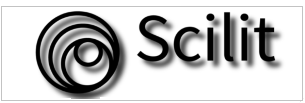Transformasi Digital dalam Edukasi Stunting untuk Meningkatkan Kesadaran Remaja Rumbuk Timur
DOI:
https://doi.org/10.29408/jt.v3i1.28783Keywords:
Stunting, Prevention, Digital Transformation, Adolescent Education, Information TechnologyAbstract
The digital transformation in stunting education is an innovative initiative aimed at raising awareness among teenagers in Rumbuk Timur about the importance of stunting prevention. Stunting, a condition of impaired growth caused by chronic malnutrition, has significant impacts on the physical, cognitive, and social development of adolescents. This program leverages information technology to expand the reach of educational efforts, enhance social interaction in learning, and foster collective awareness among teenagers.By utilizing social media, mobile applications, and online learning platforms, the program provides easy access for teenagers to obtain information related to stunting anytime and anywhere. These technologies enable participants to engage in interactive discussions, watch educational videos, and share personal experiences through online platforms, enriching their understanding of the importance of balanced nutrition and stunting prevention. This Community Service Program (PKM) explores how digital technologies can be applied to enhance adolescent understanding, stimulate behavioral changes within families and communities, and create a sustainable positive impact. The results of the program indicate a significant increase in knowledge among teenagers, demonstrating the potential of technology as an effective tool in public health education
References
Andriani, H., Friska, E., Arsyi, M., Sutrisno, A. E., Waits, A., & Rahmawati, N. D. (2023). A multilevel analysis of the triple burden of malnutrition in Indonesia: trends and determinants from repeated cross-sectional surveys. BMC Public Health, 23(1). https://doi.org/10.1186/s12889-023-16728-y
Dan Kepatuhan, P., Runiari, N., Hartati, N., & Ners Jurusan Keperawatan Poltekkes Kemenkes Denpasar, P. (n.d.). Jurnal Gema Keperawatan |Volume 13|Nomor 2|.
Dina, R. A., Mustaqimah, M., Mustafidiyah, N. H., Khawariz, M., Fadhillah, M. H., Dewanthi, S. A., Zakia Elyas, U., Rahmawati, A. D., Raiyardhi, Y., Istiqomah, N., Kristi, R., & Lingga, B. (n.d.). Edukasi Praktik Pemberian Asi Eksklusif Sebagai Upaya Pencegahan Stunting Pada Baduta Education On Practices Of Exclusive Breast Feeding As An Effort To Prevent Stunting In Children. In Abdimas Galuh (Vol. 5, Issue 1).
Ernawati, A., Perencanaan, B., Daerah, P., Pati, K., Raya, J., Km, P.-K., & Tengah, P. 59163 J. (2022). Media Promosi Kesehatan Untuk Meningkatkan Pengetahuan Ibu Tentang Stunting Health Promotion Media to Increase Mother’s Knowledge about Stunting (Vol. 18, Issue Desember). http://
Femyliati Rahmanita. (2023). Pengaruh Edukasi Gizi Melalui Media Sosial terhadap Pengetahuan Gizi dan Pemilihan Menu di Aplikasi Pesan Antar Makanan. 2 (Juni 2023). 248-254. https://doi.org/10.20473/amnt.v7i2.2023.248-254
Hastuti Sekolah Tinggi Ilmu Ekonomi Bhakti Pembangunan, W., & Maria Dulame Sekolah Tinggi Ilmu Ekonomi Bhakti Pembangunan, I. (2024). Penyuluhan Masalah Stunting Terkait Pencegahan Masalah Dan Masa Depan Indonesia. In Agustus (Vol. 1, Issue 2).
Hatijar, H. (2023). The Incidence of Stunting in Infants and Toddlers. Jurnal Ilmiah Kesehatan Sandi Husada, 12(1), 224–229. https://doi.org/10.35816/jiskh.v12i1.1019
Karya Kesehatan, M., Simbolon, D., Batbual, B., Debora Ratu Ludji, I., Kemenkes Bengkulu, P., Gizi, J., Kemenkes Kupang, P., Kebidanan, J., & Keperawatan, J. (2022). Demsa Simbolon: Pembinaan Perilaku Remaja Putri dalam Perencanaan Keluarga dan Pencegahan Anemia Pembinaan Perilaku Remaja Putri Dalam Perencanaan Keluarga Dan Pencegahan Anemia Melalui Pemberdayaan Peer Group Sebagai Upaya Pencegahan Stunting (Vol. 5, Issue 2).
Wardhani, L., Widowati, N., Soedarto, J. H., Tembalang, S. H., & Kotak, S. (n.d.). Kelurahan Tanjung Mas Kota Semarang.
Wididiati Putri. (n.d.). Implementasi Kebijakan Penanganan Stunting Di Kabupaten Lombok Timur (Studi Kasus Di Desa Lenek Duren Kecamatan Lenek)
Downloads
Published
How to Cite
Issue
Section
Categories
License
Copyright (c) 2025 Robiatul Adawiyah Halimah, Mohammad Din Nur Ikhsani, Algi Hirlan Maulidi, Andre Faturrahman Al Khaffah, Yuyun Reka Asmayani, Muh. Ardika, Salas Wati, Bambang Maulidin, Irnia Yulisandra, M. Royyan Taslim, Febywan Saputri, Kariyalsi Adinda

This work is licensed under a Creative Commons Attribution 4.0 International License.
Copyright & License
Copyright
Authors published in this journal agree to the following terms:
- The copyright of each article is retained by the author (s) without restrictions
- The journal allows the author(s) to retain publishing rights without restrictions
- The author grants the journal the first publication rights with the work simultaneously licensed under the Creative Commons Attribution License, allowing others to share the work with an acknowledgment of authorship and the initial publication in this journal.
- Authors may enter into separate additional contractual agreements for the non-exclusive distribution of published journal versions of the work (for example, posting them to institutional repositories or publishing them in a book), with acknowledgment of their initial publication in this journal
- Authors are permitted and encouraged to post their work online (For example in the Institutional Repository or on their website) before and during the submission process, as this can lead to productive exchanges, as well as earlier and larger citations of published work
- Articles and all related material published are distributed under a Creative Commons Attribution- 4.0 International Public License (CC - BY 4.0).
License
Teknokrat: Teknologi Informasi untuk Masyarakat is licensed under a Creative Commons Attribution- 4.0 International Public License (CC - BY 4.0).
![]()
You are free to :
Share — copy and redistribute the material in any medium or format
Adapt — remix, transform, and build upon the material for any purpose, even commercially
Under the following terms :
Attribution — You must give appropriate credit, provide a link to the license, and indicate if changes were made. You may do so in any reasonable manner, but not in any way that suggests the licensor endorses you or your use.
No additional restrictions — You may not apply legal terms or technological measures that legally restrict others from doing anything the license permits.














